
JACINTHA is well known to two generations of St. Lucians with a fading recognition among the more recent third generation. She made her mark with the publication of her first book of folk tales Give Me Some More Sense in 1979. The book was hailed in St. Lucia and the wider Caribbean as an important attempt to document and preserve some of that incredible oral tradition in which the wisdom of our ancestors has been encoded. Jacintha was ahead of her time yet following the road less traveled that was first blazed by persons like Harry Simmons and travelled differently by Derek and Roddy Walcott.
Put differently – we need to situate Jacintha’s early work in the wider context of the march of time and what was happening to our oral traditions and our broader cultural heritage. Harry Simmons was the father of the movement that triggered our progress from colonial cultural hegemony towards an acceptance of our culture and the emergence of cultural nationalism. Harry extensively explored, intensively immersed and painstakingly wrote about every facet of life in a society in transition from colonial rule to self-awakening. And on that journey Harry brought with him a younger generation of inquisitive St. Lucians that included the Walcott brothers, Dunstan St. Omer, Spar St. Helene. Each of these cultural neophytes discovered their niche and executed their mission. From their collective immersion in St. Lucian culture, the Walcott brothers gave literary expression to its language, its characters, its folk myths and characters; Dunstan and Spar gave visual expression to that same universe. Dunstan through the idiom of his brush in both literal and stylized (cubist) renditions and Spar through the idiom of his camera lens capturing in monochromatic starkness the reality of the times.
Since that pioneering generation the torch was picked up by others who continued the exploration that included Msgr Patrick Anthony with the founding of the Folk Research Center and the compilation of an extensive archive of authentic folk material.
Jacintha’s work is part of that second wave of cultural nationalism which is historically situated in the independence era. When Give Me Some More Sense was published in 1979 (notably the year of St. Lucia’s Independence), it was embraced in the education system and two generations of St Lucian school kids were sensitized to the oral tradition represented in those tales. As is noted in the Foreword of the Compere Lapin Tales, Give Me Some More Sense went through three local publishing editions – 1979, 1983 and 1988 – before being taken up by MacMillan Education and reprinted five times between 1989 and 1995. Sometime after that last publication, the book disappeared from the school’s booklist and thus began the descent into amnesia.
I have taken time to situate Jacintha’s work in a historical context because this work is not just the publication of some old-time stories and Jacintha is not just an individual collecting and publishing stories. The work is located in a tradition of resistance to colonial and post-colonial imposed cultural norms and standards and it represents the encoding of our cultural DNA in much the same way that Aesops Fables encodes the oral wisdom and tradition that originated from the Greeks and spread to become an iconic expression of Western tradition.
And Jacintha is not just another eccentric individual collecting and publishing stories, she is part of what has always been a cultural Avant Garde that has waged the cultural war in which the indigenous has fought to stand its ground in the face of the systematic and relentless advance of cultural imperialism. And allow me to digress a bit to speak a bit about the concept of cultural imperialism because with the ending of the Cold War such notions have fallen into disuse. But the fall from fashion does not necessarily mean the loss of utility because the concept speaks to the concentration of power, influence and means of the global cultural industries that dominate cultural expression and communications. Just as the concentration of wealth and power in multinational corporations provide them with hegemonic dominance so too is the influence, reach and power of the giants of culture and communication. So Disney and Hollywood are to the sphere of culture what Apple and Amazon are to the world of tech and the sphere of business and what the US or Chinese military industrial complexes are to the business of war. And lest we assume that, because we are talking about culture it is less threatening to our self-definition, then read the articles in the major foreign affairs journals which speak about the importance of “soft power” in promoting the interests of nations.
So culture is an arena of active contestation in which the powerful seek to establish their ways of living and being as the global norm and which increasingly seeks the commodification of these values into exportable products.
This is the ideological context in which we must situate the work of persons like Jacintha. She is seeking to capture and create modern value for the stories which – from way back in our pre-literate cultural past – encoded the accumulated values, experiences, and logic of our ancestors. And in moving the code from its oral encryption to the written expression of the text, she is helping its chances of survivability in this era.
The critical question however is whether this is enough! And Jacintha’s own journey tells us that we are still falling far short of the challenge of our times because inspite of the fact that Give Me Some More Sense was first published almost 40 years ago here she is today – like the proverbial task of Sisyphus – having to roll this boulder back uphill from the cultural abyss into which it had fallen. While we and our children would have read and hopefully inculcated these stories, they are unknown to our current generation – our grandchildren.
There are two major and contradictory currents which explain why this has happened: Amnesia and nostalgia.
Amnesia as we well know is the loss of memory and at the personal biological level we are all familiar with the painful, devastating consequence in our families. Loved ones become silent shadows of themselves as they are increasingly unable to remember first events, then people and ultimately themselves. They wander like living dead in a fog of incomprehension that neither love or pain can penetrate.
Amnesia also exists at the societal level but is a less recognizable phenomenon. Like its biological counterpart, it starts when a society loses its history, then its language and then its identity. This then leads to actual extinction of peoples as has happened in many parts of the world. Or it leads to a spiritual diaspora in which a people or a tribe, bereft of all indigenous tradition, become assimilated appendages to some soulless melting pot. History then is irrelevant and identity is no longer something that has evolved in the crucible of history but is simply a fabrication of the contemporary with no antecedents. Derek Walcott warned about this in his address at the launch of the Rat Island Foundation in 1993 reminding us that “more than ecological disaster can happen to human nature, it can lose ritual and custom” and when this “declines into nostalgia we are all reduced”.
Cultural amnesia is a sociological process that is often accelerated by the pressures of modernization and the forces of globalization. Caught in this vortex, the societies referred to as “primitive” can easily disappear as the gap between their level of technological/scientific development and that of the wider world is too wide a chasm to bridge. Caught in this vortex as well, our society may instead suffer the fate of the spiritual diaspora. As small islanders, we may lose faith and conviction of our own capabilities to navigate the global currents; we seek individual mobility in wider foreign pastures and this too often happens at the expense of our original identity – we assimilate while shedding the “baggage” of original identity. Franz Fanon the Martiniquan Psychiatrist who played a seminal role in the Algerian War of Independence also wrote extensively about this process of absolute cultural assimilation. Fanon’s work exposed these processes of Western assimilation as being fundamentally driven by white supremacist narratives of history and identity.
This is no academic argument. The culture wars are real and anyone following the cultural narrative unfolding within the political dynamic of the United States today will immediately see the relevance. At its core, the struggle is for the soul of America – to make it great again by moving it from its foundation of plurality and an empowering diversity to (re)make it singular and white as the assertion of its greatness.
The other contradictory current is Nostalgia and the outcome of this, as the earlier quotation from Walcott attests is a diminution of our potential and a reduction of our possibility.
Nostalgia is a normal human tendency. It is a natural human tendency for us to long for things they way they used to be because that provides referential points that are safe, and already known. As we age, nostalgia is the impulse that both protects us from change by creating an armour of memory that helps us remain centered but it also functions as a change blocker if we romanticize the past as a means of preventing us from embracing the future.
I would like to conclude by focusing on this tendency to nostalgia which I consider to be, rather unfortunately, a self-inflicted inhibiting constraint in our conduct of cultural advocacy here in St. Lucia.
Nostalgia can neither be a strategy nor a weapon in our culture wars. If we persist in employing this emotion, our efforts are doomed to failure. I have repeatedly warned about this and in October 2017 at the renaming of the Folk Research Center in honor of Monseigneur Patrick Anthony’s 70th Birthday, I quoted Prof. Gordon Rohlehr who in turn had also sounded the warning bells 25 years earlier.
Prof. Rohlehr warned that:
“Folk research can easily remain a sort of archaeology: an excavation of long dead fossil remains of cultural practices that have become emptied of their vital force through time and change and the obsolescence of earlier generations. It can become a kind of nostalgia: a desperate attempt to hold back the hands of the clock.
Or it can attempt to understand the very principles of movement from traditional to contemporary modes of existence, perception,
attitudes, life-styles and habits of making.
…The Caribbean is in a state of intense cultural crisis and has real need for institutions capable of a dynamic perception of culture.”
Both time and circumstance have proven this warning to have been prophetic. The FRC fire was a culture’s death by fire and its immolation reduced to ash irretrievably invaluable records whose very utility had already been destroyed by the failure to digitize and modernize. We have met the enemy Sire, and it is us!
Friends, put crudely – the past is the past. We must know it; we must own it but we can never restore it!
Our elemental challenge in the culture wars, in that struggle to define and affirm our self is to focus on Rohlehr’s proposition: “to understand the very principles of movement from traditional to contemporary modes of existence, perception, attitudes, life-styles and habits of making” and to leverage that understanding to shape our contemporary and future existence infused by this ancestral DNA that is so rich with resilience and so grounded in resistance.
So I conclude not simply by congratulating Jacintha for persevering in this labour of Sisyphus but by challenging her to go well beyond the re-rolling of this stone after 40 years. It is time to move beyond print to more contemporary media of dissemination, more persuasive strategies of inculcation, more extensive means of socialization of the essence of these tales.
There are profound lessons to be learnt from studying what cultural transnationals like Disney have done with folk tales. The Disneyfication of the folk tale has meant the appropriation of folk tales from all over the world and their translation from fairy tale to film.
Compere Lapin has already been brought to international attention by our World Class Chef Nina Compton in the naming of her celebrated restaurant in New Orleans (if you google Compere Lapin, the first ten pages of references are all about Nina’s restaurant). This is positive but the moral of that story is that Nina has taken something iconic of our culture and successfully associated the elemental characteristics of Compere Lapin (wit, cunning, resilience and the capacity to overcome all odds) with her own culinary creativity and a bold assertion of the fusion of her native roots with international flavors.
So lets go brave through the doors that have already been opened. Nina was of the generation who would have learnt about Compere Lapin from the early editions of Jacintha’s books. The character evidently made an indelible impression.
Do we dare now think of new fusions?
Davina Lee with Jacintha Lee partnering with Ted Sandiford and other local animators to create the Compere Lapin cartoon series? (and before Disney appropriates the character?)
Beyond the traditional stories, there are contemporary tales to be told in film by Davina of modern-day Compere Lapins surviving and thriving in a competitive world and a brutal global environment.
Do we dare imagine Compere Lapin and all of the other characters as or even more inspirational to our children as Dora the Explorer, Sponge Bob, Bart Simpson, the Powerpuff Girls, Bugs Bunny and Mickey Mouse?
Can we imagine a line of games and quizzes that challenge our children with logic and maths, critical and disruptive thinking around dilemmas in this world of native imagination? There are also issues of climate change, sustainable development, economic competitiveness, gender equality, social equity that need to be interwoven in the tales of the many comperes that draws on their comparative skills and competencies to remind us that native genius is the endowment of all – even the oppressed and the dispossessed.
So we can’t allow amnesia and we can’t afford nostalgia. Let us appropriate what is ours; let us contemporize what we have inherited; and let us assert a bold identity whose DNA is firmly rooted in a resilient ancestry and a history of resistance.


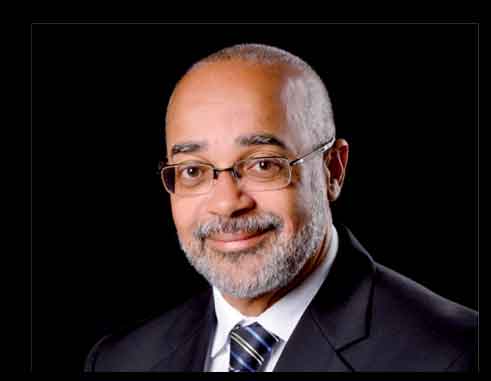


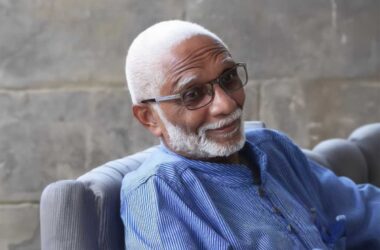
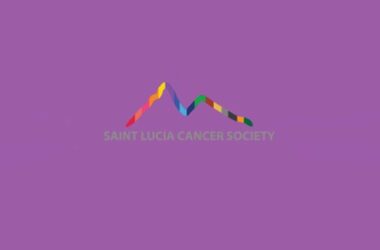
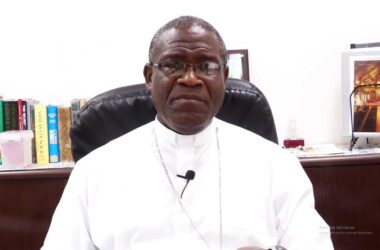
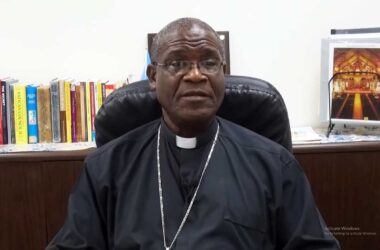


![Simón Bolívar - Liberator of the Americas [Photo credit: Venezuelan Embassy]](https://thevoiceslu.com/wp-content/uploads/2025/12/Simon-Bolivar-feat-2-380x250.jpg)
